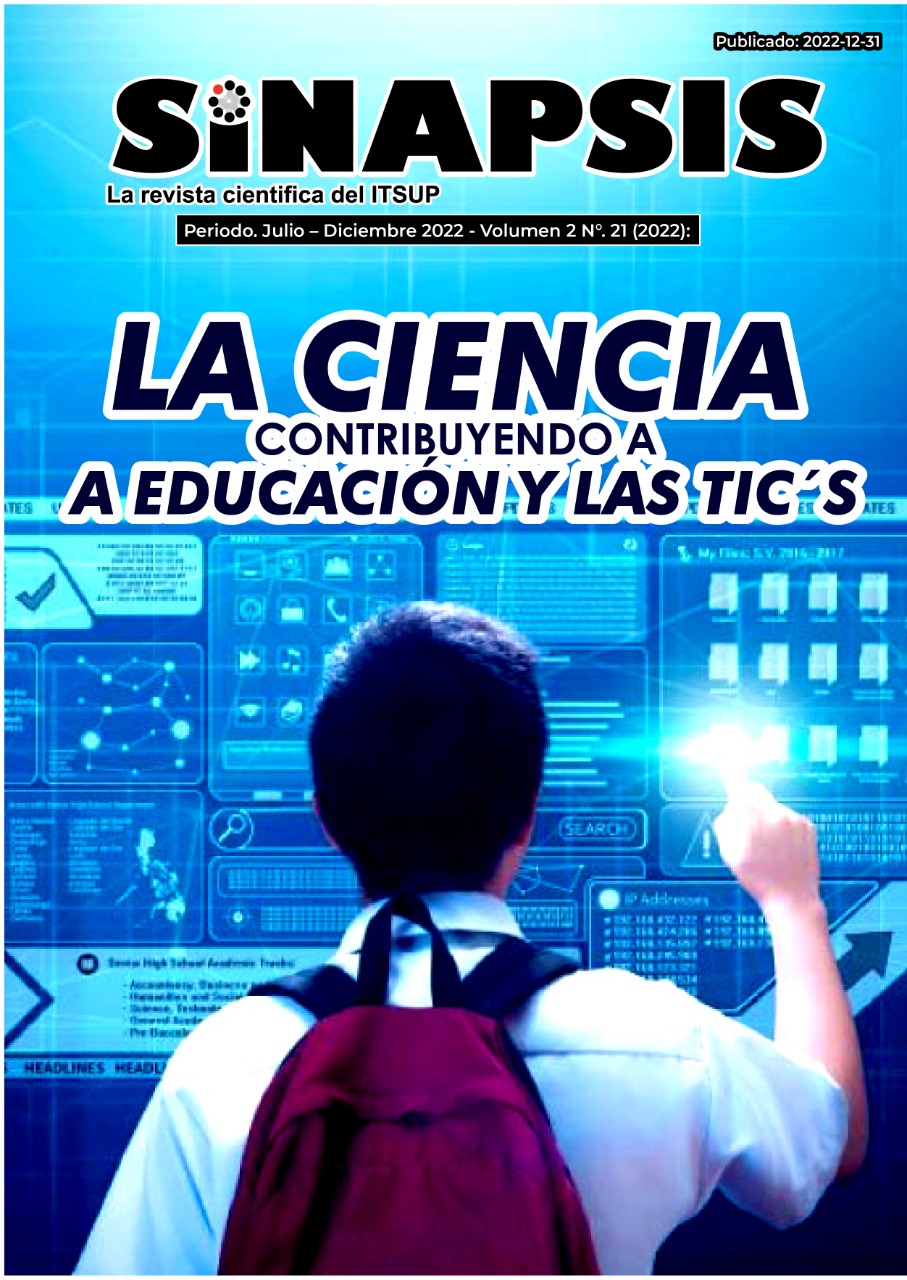Planificación Estratégica y su relación en la Gestión del Talento Humano de una Cooperativa de Transporte
DOI:
https://doi.org/10.37117/s.v2i21.749Keywords:
Strategic planning, human talent management, transport cooperativeAbstract
The main problems facing our society is the lack of organization and therefore the lack of vision for the future, which leads many companies to show a lack of planning and this affects the correct management of their workforce or human talent. Today's world requires companies to be able to innovate or reinvent themselves every day, therefore it is essential to know how the Strategic Planning is related to the Management of Human Talent of the Passenger Transportation Cooperative by Taxi “Guayaquil Avenue #39” of the Portoviejo Canton in the period 2021-2022, for this it was proposed: to analyze the level of incidence, responsibility or function of strategic planning in the management of human talent, determine the approaches to the quality of the service provided by the drivers and explain the impact of said planning in the management of human talent in the aforementioned taxi cooperative. Each of these aspects was achieved through the application of the questionnaire on the Likert scale to the employees (drivers) of the cooperative, these results were analyzed and interpreted, determining that most of them know the strategic planning of the institution with all what this involves, however it is necessary to provide workshops that reinforce knowledge and allow us to continue providing a quality service with efficiency and warmth, managing to continue with an excellent image before the community.
Downloads
References
Bengoetxea, A. (2016). Http://ciriec-revistajuridica.es/. http://ciriec-revistajuridica.es/
Bernardo Sukier, H., Ramírez Molina, R., & Parra Fernández, M. (2021). Modelo de gestión estratégica de talento humano desde un enfoque sustentable. En Educosta. Corporación Universidad de la Costa. https://hdl.handle.net/11323/8517
Castillo, F. (2010). IMPORTANCIA DE LA GESTIÓN DEL TALENTO HUMANO – Dr. FREDDY WILLIAM CASTILLO PALACIOS. http://blog.pucp.edu.pe/blog/freddycastillo/2010/11/04/importancia-de-la-gestion-del-talento-humano/
Córdova, M. F. G. (2018). LA CALIDAD DE SERVICIO DE LAS COOPERATIVAS DE TAXIS DE LA CIUDAD DE RIOBAMBA Y SU INCIDENCIA EN LA SATISFACCIÓN DE LOS CONSUMIDORES, PERÍODO JUNIO 2015—JUNIO 2016 INFORME DE INVESTIGACIÓN PREVIO A LA OBTENCIÓN DEL TÍTULO DE INGENIERA COMERCIAL MENCIÓN: GESTIÓN DE LA MICRO Y PEQUEÑA EMPRESA. 78.
Davila, R. (2002). Davila, M. (2012). Las cooperativas como agentes de desarrollo local. Colombia: Pontifica Universidad Javerianna—Buscar con Google. https://www.google.com/search?sxsrf=ALiCzsZ2igPwR4CLBfcZ-0awEoablwrsOA:1658605836209&q=Davila,+M.+(2012).+Las+cooperativas+como+agentes+de+desarrollo+local+.+Colombia:+Pontifica+Universidad+Javerianna&spell=1&sa=X&ved=2ahUKEwj258Gd5I_5AhWPEmIAHX1BCdIQBSgAegQIARA3&biw=1242&bih=597&dpr=1.1
Fernandez, S., Martinez, L., & Ngono, R. (2019). BARRERAS QUE DIFICULTAN LA PLANEACIÓN ESTRATÉGICA EN LAS ORGANIZACIONES. http://www.scielo.org.co/scielo.php?script=sci_abstract&pid=S0124-86932019000100254&lng=en&nrm=iso&tlng=es
Guzmán, E. B., & Rica, C. (2017). Cooperativismo en Transportes. 19.
Lopez, J. (2015). Las cooperativas de trabajo asociado y la aplicación del Derecho del TrabajoTirant lo Blanch—Editorial Tirant Lo Blanch. https://editorial.tirant.com/es/libro/las-cooperativas-de-trabajo-asociado-y-la-aplicacion-del-derecho-del-trabajo-juan-lopez-gandia-9788484566182
Macias, J. (2017). APORTE DE LAS COOPERATIVAS DE TRANSPORTE AL DESARROLLO DE LA ECONOMÍA POPULAR Y SOLIDARIA EN LA PROVINCIA DE MANABÍ DURANTE EL AÑO 2016. https://1library.co/document/q7w0exrz-cooperativas-transporte-desarrollo-economia-popular-solidaria-provincia-manabi.html
Rodríguez, J. M. P., Gama, M. M. K. X., & Cotilla, Z. R. (2014). La lógica de la planificación empresarial y de la productividad del trabajo. Economía y Desarrollo, 152(2), 122–137.
Rodriguez, K., Ortiz, O., Quiroz, A., & Parrales, M. (2020). Innovar en la pandemia: ¿Qué aprendieron las agencias de innovación de Europa y América Latina? - Puntos sobre la i. https://blogs.iadb.org/innovacion/es/innovar-en-la-pandemia-que-aprendieron-las-agencias-de-innovacion-de-europa-y-america-latina/
Sanchez, J., & Calderon, V. (2012). Diseño del proceso de evaluación del desempeño del personal y las principales tendencias que afectan su auditoría. http://www.scielo.org.co/scielo.php?script=sci_arttext&pid=S1657-62762012000100004
Thompson, P. (2020). Nuevas formas de trabajar en la empresa del futuro | OpenMind. https://www.bbvaopenmind.com/articulos/nuevas-formas-de-trabajar-en-la-empresa-del-futuro/
Watson, T., Express, A., Coca, C., & Estados Americanos, O. (2021). Las 10 tendencias en la gestión de recursos humanos | Deloitte España. https://www2.deloitte.com/es/es/pages/human-capital/articles/10-tendencias-gestion-RRHH.html
Downloads
Published
How to Cite
Issue
Section
License
Copyright (c) 2022 César Andrés Vélez Moreira, Maria Rosalba Cedeño Pico

This work is licensed under a Creative Commons Attribution-NonCommercial-NoDerivatives 4.0 International License.
El Copyright posee el propósito de proteger tanto la propiedad intelectual de los autores como sus resultados. El comité editorial de la Revista Sinapsis se compromete con los autores a proteger, defender y preservar tanto su trabajo como su reputación, y toma muy en serio las acusaciones de infracción, plagio, disputas éticas y fraude. Si un autor se da cuenta de un posible plagio, copia de resultados, fraude o infracción, le rogamos que se comunique con la mayor brevedad posible con el comité editorial de la revista Sinapsis.
CC BY-NC-ND: esta licencia permite a los reutilizadores copiar y distribuir el material en cualquier medio o formato solo sin adaptarlo, solo con fines no comerciales y siempre que se le atribuya al creador.
Términos de Licencia:
Reconocimiento: debe otorgar el crédito correspondiente, proporcionar un enlace a la licencia e indicar si se realizaron cambios. Puede hacerlo de cualquier manera razonable, pero no de ninguna manera que sugiera que el licenciante lo respalda a usted o su uso.
No comercial: no puede utilizar el material con fines comerciales.
No Derivada: si remezcla, transforma o construye sobre el material, no puede distribuir el material modificado.
Sin restricciones adicionales: no puede aplicar términos legales o medidas tecnológicas que restrinjan legalmente a otros de hacer cualquier cosa que permita la licencia.
El autor esta en la obligación de seguir las exigencias según lo instruido en la licencia ubicada en el enlace: https://creativecommons.org/licenses/by-nc-nd/4.0/deed.es






